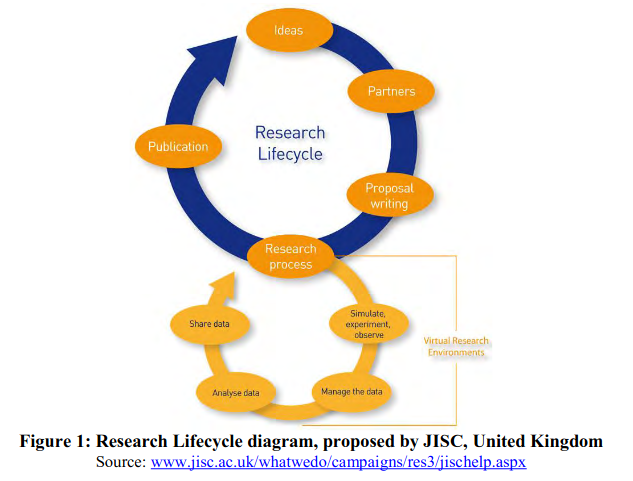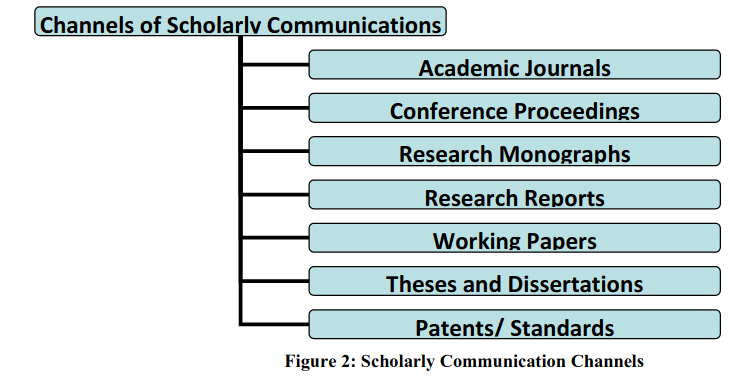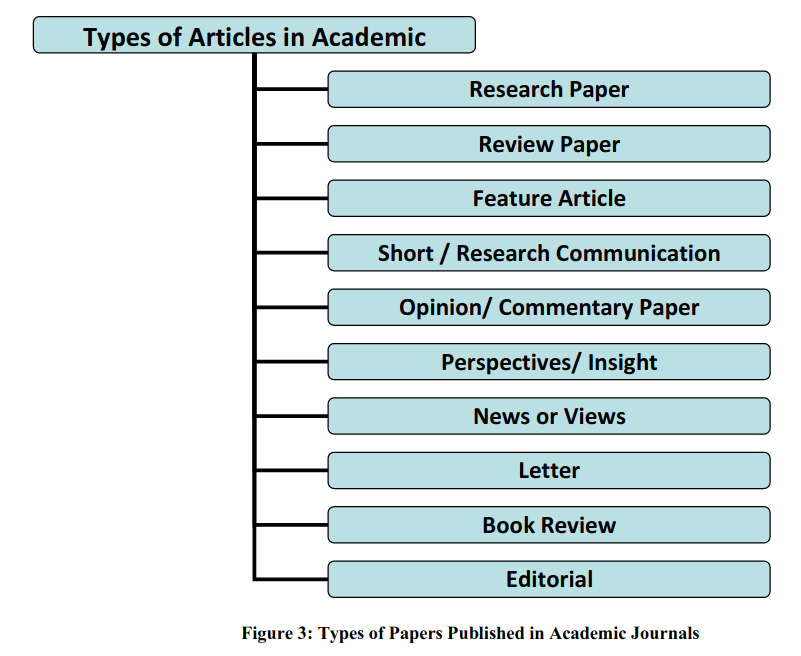1.5 The Process of Scholarly Communication

The scholarly communication is only a small component of a larger Research Lifecycle. The researchers engaged in advancement of knowledge through participating in collaborative scientific research projects, more specifically plan their research in consultation with their research partners, funders and institutional research team. Initially, a group of researchers nurtures research ideas, which are fine-tuned by their research partners and other team members. Then they write a well-structured research proposal and submit to a research funding agency. The funder selects a research proposal for funding, subject to fulfilment of the funder’s broader criteria and scope. Funder may insist modifying certain aspects of a research proposal to suit their funding objectives, obligations and budgetary limitations. After acceptance of a research proposal, then the research process starts in virtual research environments – in active participation with the collaborative institutions and other research partners. Each partner institution may initiate a specific and well-defined component of the research work. Coordination of all research components is done by the research director or principal investigator in active participation with all project leaders of different components. A typical research process involves certain activities for research data generation, namely, Simulate, Experiment and Observe. In social science research, field work is usually undertaken for research data generation through observation or simulation. Then the research process intrinsically involves in management of generated data, data analysis and data sharing. Here, the research director and team leaders are involved in report writing, and communicating findings of the collaborative research work. This research team may choose any of the scholarly communication channels – such as journals, conference proceedings and research monographs – to disseminate results of research to a larger audience. The research team is also responsible to produce high quality report for communicating to the funding agency and other stakeholders responsible for initiation of any follow-up research activities. The generated or collected research data also requires preserving for future reuse or reutilization in follow-up research projects. Then the Research Lifecycle reiterates for solving some of the related research problems and advancing frontiers of knowledge. Figure 1 shows a Research Lifecycle diagram, universally applicable to scientific research paradigms.
1.5.1 Different Channels of Scholarly Communications

There are many avenues of scholarly communication available to researchers. The most popular channel of scholarly communication is scholarly periodicals. This periodical publication channel is well respected within scientific communities for their high level of academic impact, credentials, quality assurance, accessibility, and outreach potentials. The scientific conferences are considered as a good avenue for reaching out to expert communities in an interactive mode to get feedbacks on presented research papers. Conference papers may be published before or after the conference. Nowadays, many conferences are co-publishing presented conference papers in online proceedings, available with commercial publishers’ knowledge gateways. Some conference organizers are even collaborating with academic journals to publish special issues, selecting certain number of high quality papers presented in the respective conference. In social sciences and humanities disciplines, a research monograph is considered as an effective publishing channel for a research project. Books or monographs are considered as non-ephemeral items having long-standing impact within a community of researchers. Research monograph is also a good option for publishing results of research. In some books, collections of chapters written by different authors are considered, where each chapter is a kind of research paper depicting certain amount of results of a research work. Research reports and project reports are formal mode of research communication to record and disseminate research results to funding agencies and other stakeholders involved in the research process. In some countries, public-funded project reports are made available in public domain through online open access. Theses and dissertations are formal mode of academic research communication to record and disseminate research results of doctoral and master’s level research studies, undertaken by enrolled students in higher educational institutions and universities. In some countries, public-funded doctoral dissertations are made available through institutional or national repositories of electronic theses and dissertations (ETD). In India Shodhganga1 project of the INFLIBNET Centre is one such national system. Working papers are a type of scholarly papers to communicate findings of research in progress. Working papers help the researchers in getting qualitative and timely feedback for making certain changes in research design or analysis of generated data. The patents are vehicle of protection of intellectual property rights emanated from scientific projects or scientific discoveries. A new product or process or technique derived from a scientific research work, which has certain applications for the betterment of human life, is patentable and inventors can claim it as their intellectual property by registering it with patenting authorities by following certain legal procedures. All these channels of scholarly communication are popularly known as primary sources or original sources or primary literature. Figure 2 gives an indicative list of primary sources of information. Primary sources are indexed in global or national indexing and abstracting (A&I) databases, which are also popularly known as alerting service. Science Citation Index2 (SCI), produced by Thomson Reuters, is an example of secondary source of information connecting to recently published primary literature. Figure 3 gives a list of types of papers published in academic journals. Most predominant types are research papers, review papers, research communications or short communications. Some academic journals include feature articles based on theme of a special issue. Other regular types of articles are book reviews, opinion or commentary papers, perspectives or insight papers, news or views, and conference reports. In many journals, editorial is regularly published to express editorial points of view on certain aspects related to journal specific issues or research environment or some current issues in general.

